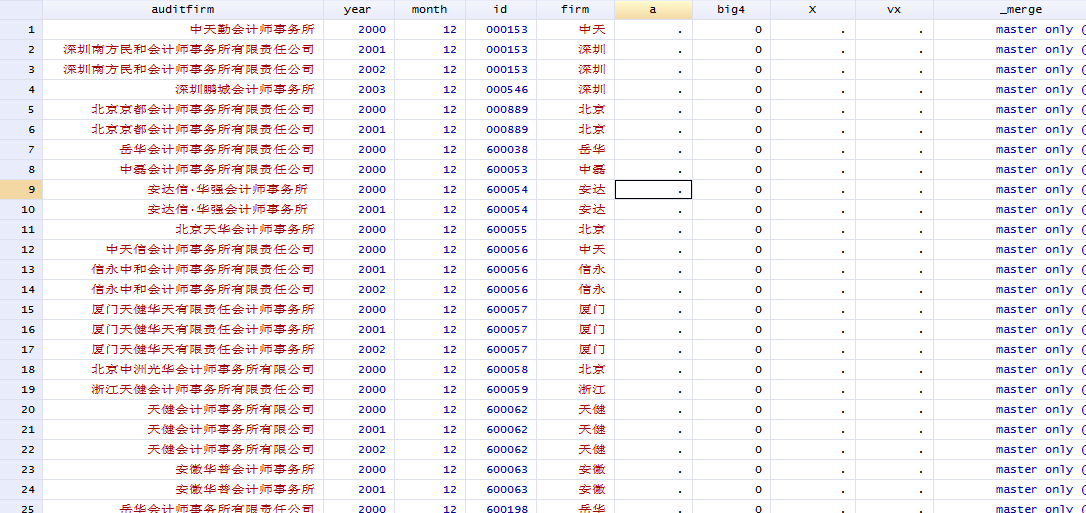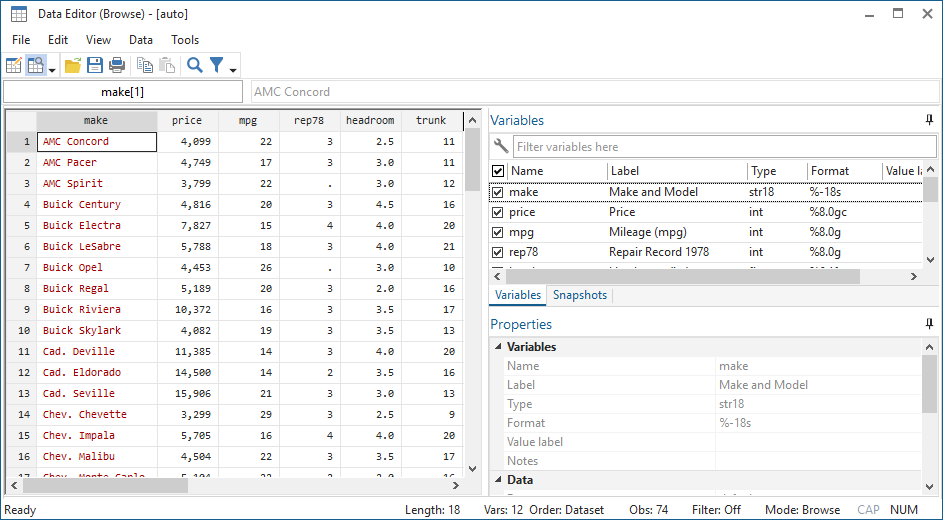

If you want to perform analysis on customer stays, it is more useful to have a single dataset that contains all information from both check-in and check-out datasets. The only variable in common between these datasets is the customer ID variable, and this links observations in the first dataset with observations in the second dataset. The check-out dataset has total cost, pre-paid or pay on check-out, state of room on check-out, and check-out time.

The check-in dataset has variables for room number, number of guests, length of stay, main guest name and check-in time. These datasets would each have a customer ID variable that was the same for both datasets. For example, you might have a dataset with hotel check-ins, and a separate corresponding dataset with hotel check-outs.
MERGE STATA SOFTWARE
Finally, using the right commands depending on the software to be used, the files will be merged.The merge command is used when you have two datasets with different variables linked by common identification variable(s), and you want to combine them into one dataset. In this case, the base file should be the men's questionnaire and the resulting file (unit of analysis) will be the Couples file.Ĥ. This means that not all currently married women have a match with a men's questionnaire. In DHS, men's questionnaires are only applied to a sub-sample of households. If the relationship is that of one to one, the base file is normally the one with the least number of cases.That way, mothers’ characteristics are assigned to children. In the case of matching women and children, the base file should be the children’s file. If the match is done the other way around, once the program matches the first woman it will not look for another woman or it will give an error for finding duplicate cases. The reason is that you may want to assign to every woman the characteristics of her household. For example, if merging data from households and women, the base file should be the women’s file. Normally, when the relationship is that of one to many, the base file is the one with the many entities.The base file establishes the unit of analysis. Sort both data files by the identification variables.ģ. Determine the common identifiers (identification variables).Ģ. For example, to match the household data to the women's data, first rename HV001 to V001 and HV002 to V002, or create a copy of HV001 in V001 and a copy of HV002 in V002 in the household data before merging.Īll statistical packages (SPSS, SAS, STATA) have commands that allow merging files, but regardless of the package the following steps are necessary:ġ. With software that requires the variables that are used for merging to have the same name in both files it will be necessary to either rename or to create copies of the matching variables in one file to match the names in the other file being used. Notice that there is no relationship between children and men because children come from the birth history, which is asked to women. They also can be appended to men, to create couples. Women variables can be appended to their children.

Note that these functions preserves the type: if the input is a factor, the output will be a factor and if the input is a. See the topic Chapter 10, Multiple Response Sets, on page 73 for. This table shows that household variables can be appended to women, men and children. Busca trabajos relacionados con Stata merge on two variables o contrata en el mercado de freelancing más grande del mundo con más de 19m de trabajos. In the cells intersecting the rows and columns, variables from the base files used to match the secondary file are listed. In the columns, the secondary files along with the variables to be used as keys or matching variables are listed. The following reference table shows the variables required to match different files. The files can be more easily merged using variables HV001 with V001 and HV002 with V002. For example, it is not possible to merge the household and women’s files using HHID and CASEID because CASEID has three extra characters identifying the women’s line number. When merging files it is generally easier to use the original variables rather than the ID variables.


 0 kommentar(er)
0 kommentar(er)
